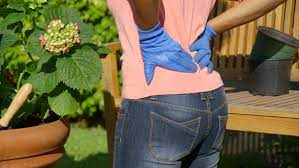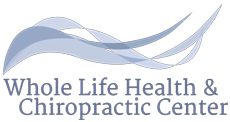
Forget the gym, gardening is a great form of exercise. Not only do you get some fresh air and sunshine but you have the satisfaction of creating a pleasant outdoor environment. By following the Yard Work Safety Hints, Tips for Safe Equipment Use , Simple Stretches for Everybody and What To Do If Your Start To Hurt outlined below you can get a great workout, have the satisfaction of a natural yard or garden oasis, and reduce or eliminate strains, muscle aches and potential injuries.
Yard Work Safety Hints
Gardening involves bending, twisting, reaching, pulling and/or pushing, getting up and down, walking, etc. The major muscles of the back, upper legs, neck, shoulders, arms and wrists are all getting a workout but they can also be getting overworked which can lead to back, neck and muscle pain, and in some cases injuries. Following the Yard Work Safety Hints can go a long way to protecting yourself from back pain. Most of these hints are simple and common sense but often the simplest precautions can have the greatest impact. They are always a reminder to keep in mind when you head out to the garden.
Here are some safety hints for avoiding injuries.
- To avoid back pain from gardening ALWAYS remember to bend your knees when picking up or pulling anything.
- Avoid bending over at your back when doing any kind of gardening as this puts undue strain on your back.
- If you need to do work at ground level, squat, kneel or sit on the ground.
- Make sure there is nothing sharp sticking up.
- It’s best to cover the ground to avoid insect bites.
- Use a turned over bucket as a seat or get a garden chair.
- Use knee pads or a padded cushion if you are going to be kneeling while working.
- Wear shoes, gloves, and preferably long pants and shirts to protect your skin.
- Make sure to use sunscreen if you are working the sun.
- Make sure to drink PLENTY of water. You will most likely lose a lot of water through sweat if you are working hard in the heat.
- Use the proper tools.
- Use a wheelbarrow or a wagon to move heavy bags and/or yard debris.
- Use two or more people if moving something bulky and heavy
- Remember to warm up before gardening/yard work. (See Simple Stretches for Everybody below)
Tips for Safe Equipment Use
Many people are turning to the state-of-the-art weed trimers, leaf blowers, hedge clippers, etc. to help out but the repetitive motions when using these and other equipment can lead to mechanical problems with the body. It can result in back and neck pain as well as more serious muscle strains and tears if not used properly. Always make sure to follow usage instructions and Tips for Safe Equipment Use in mind.
- If your equipment comes with a strap make sure to use it.
- Place the strap on the shoulder on the opposite side of your body from the device.
- This normalizes your center of gravity and reduces stress on your back
- To balance the muscles being used, switch the side on which you are operating the equipment often. Also alternate your stance and motion.
- Take frequent breaks as you may experience muscle fatigue when using any of these devices for extended periods of time.
- Consider using electric-powered items, especially if you experience back or neck pain, as they tend to be lighter than the gas engine powered ones.
- When lifting, bend your knees and hold the equipment close to your body.
Simple Stretches for Everybody
Gardening and yard work are a form of exercise
- When stretching, remember to breathe slowly and rhythmically, do not bounce or jerk. Stretching should NOT be painful.
- Either sit or stand and with your knee straight, prop your heel on a step or stool. Hold onto something if you need to stabilize your balance. Bend forward until you feel a slight pull in the back of your thigh. Hold for 15-20 seconds then repeat with the other leg.
- Stand up, balance yourself (use a support if needed), bend your knee and reach behind you and grab the front of your ankle. Pull your heel towards your buttock until you feel a slight pull in the front of your thigh. Hold of 15-20 second, repeat and then change legs.
- Weave your fingers together above your head with your palms up. Lean slightly to one side to stretch your upper body. Hold for 10 seconds then switch sides. Do this 3 times.
What To Do If You Start To Hurt
If you start to feel any tightness or strain in your muscles, it’s a sign that you need to take a break. Check to make sure you are using any equipment correctly and assess if you are lifting and/or carrying correctly. Make sure you are staying adequately hydrated, especially in hot weather, as even mild dehydration can affect your muscles. Water is the best way to stay hydrated. Avoid alcohol as it will contribute to dehydration.
If you start to feel any pain, STOP working! Sit down and apply ice to the affected area. Ice will help take down any swelling, it helps numb the pain, and encourages increased blood flow to the area. If you don’t have an ice pack, a bag of peas is a great substitute as it will conform to the shape of the area, particularly if there is neck pain. Because the muscles in the back are large you can ice for up to 60 minutes. Make sure you do not put ice directly on your skin. An ice pack or a ziplock bag with ice will work.
Low back pain is one of the the most common results of improper use of equipment, over working, improper lifting and carrying techniques, etc. when doing yard work or gardening. If you are still in pain after a day or two, make an appointment to see your chiropractor to make sure you have not moved a bone or joint out of position. Dr. Alexander has helped 1,000’s of people get back pain relief.
Happy Gardening!








